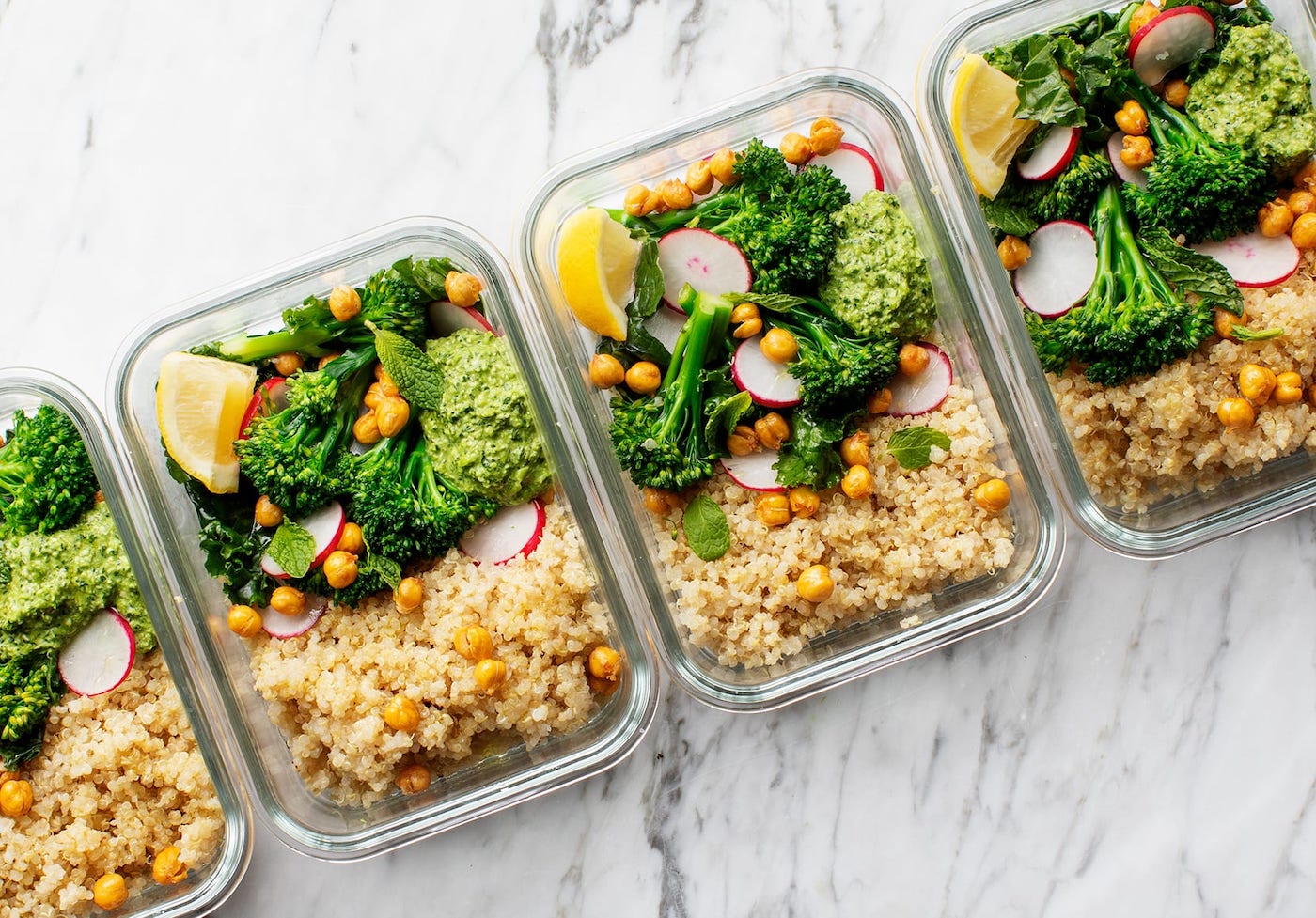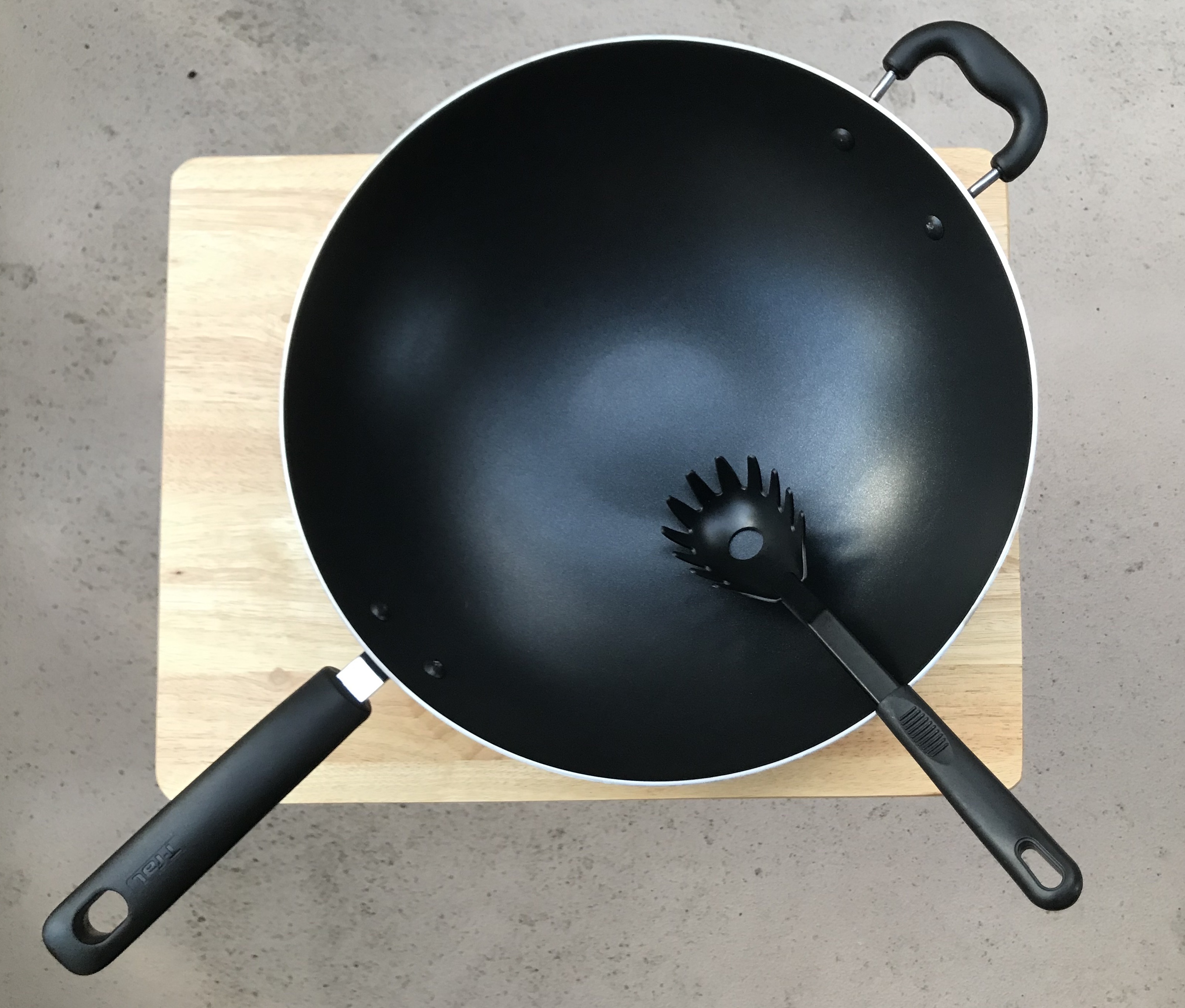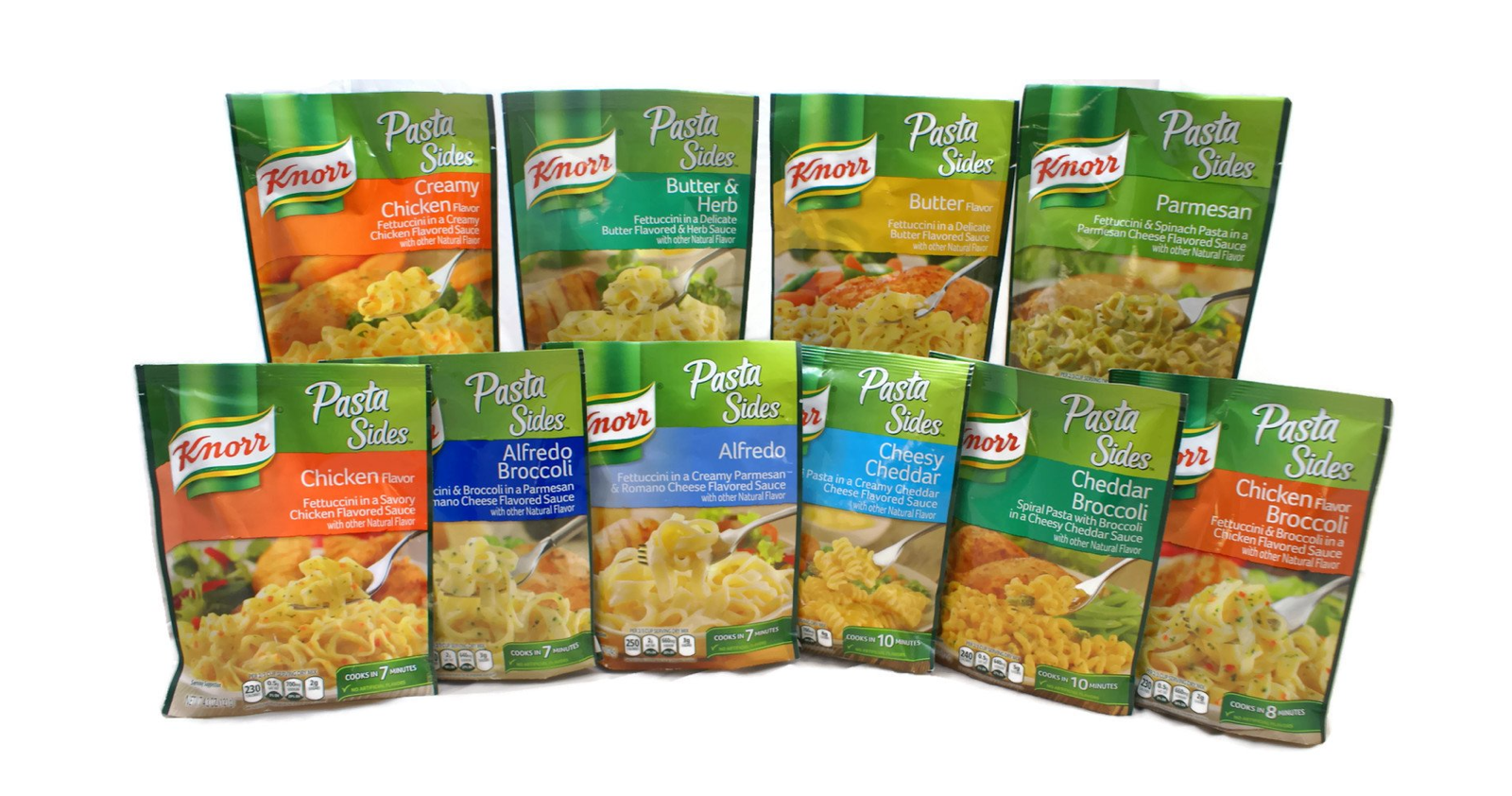One Pot Pony
A lazy person's guide to delicious meal prep
Meal prep has a bad reputation. These days it's associated with an image of a muscle-bound meathead eating rice and boiled chicken breast while doing bicep curls. But it doesn't have to be that way.
These days more people are eating in. No more school lunches, no more work lunches, no going out for a nice dinner. For most of us, that means cranking out a full lunch and dinner, day in and day out, without getting tired of our own cooking.
If you're swimming in cash and have two hours to kill every day, subscribe to Blue Apron. This post isn't for you. But if you want to eat meals that are half the price and take a tenth of the time, stick with me.
System goals
My goals for this system are four-fold:
- Taste: the meals should taste good (duh)
- Convenience: you should only have to do meal prep once a week
- Diversity: you should never get tired of the meals
- Simplicity: the basic version of all meals should only require three ingredients, a single pot, and under 10 minutes
I've been using and tweaking this system for nearly a year now. Over time I've boiled it down (pun intended) to its simplest possible form without sacrificing any of my stated design goals.
It's important to clarify what this system isn't trying to be. Most meal prep systems have you prepare full meals upfront and apportion them into separate containers.

This is a little different. You still need to "cook" each meal individually. This system describes a set of ingredients you can pre-prepare that can be used as the basis for dozens of possible recipes. Each individual meal can be prepared quickly (usually just mixing together the ingredients and heating thoroughly) because the time-consuming parts (boiling water, cooking meat, etc) are done in advance (usually only once a week or less).
My solution
Every recipe consists of just three ingredients: a protein source, a carb source, and a "flavor source".
This approach is inspired by the simplicity and versatility of — what else? — Chipotle bowls. From a selection of two rice options, five or six protein options (RIP chorizo), and a small number of salsas/toppings, you can build over 112,000 possible bowls at Chipotle.
This is the power of Combinatorial Cooking. From a seemingly limited set of base ingredients, there is a whole universe of food options you can prepare quickly and easily.
Let's break it down.
The hardware 🥄
The best part of this system is just how easy and simple it is to turn combinations of pre-prepared ingredients into a vast array of hearty meals. Just add all the ingredients to a large pot or wok, heat thoroughly, mix well, and you're done.
As hardware goes, you can't beat a 14-inch non-stick wok and large plastic "spaghetti spoon".

The wok lets you boil, saute, stir-fry, and simmer. The spaghetti spoon lets you stir, mix, scrape, and mash. They're both incredibly versatile and easy to clean. It's all you need to make any Combinatorial Cooking recipe. Plus, using a wok makes you look and feel like a real chef, that's just science.
The protein sources
Shredded chicken 🐓
This can come from a thigh or a breast, depending on your budget and light/dark meat preferences. The cheapest option is skin-on chicken thigh; the most expensive is boneless chicken breast. Though these are all relative terms; even boneless chicken breast is cheaper than the cheapest ground beef.
You can cook up to five pounds of chicken in one go with a pressure cooker or Instant Pot. Just add the chicken to the pot, add a cup of water, and cook at high pressure for 25 minutes with a natural pressure release. After this, the chicken should fall apart easily. For extra tenderness, use a meat mallet to break up the tougher fibers before starting the cook.
If you don't have a pressure cooker, it's also possible to cook a large quantity of chicken reliably in the oven. Just preheat to 400, cover a cookie sheet with aluminum foil, apply a non-stick spray, and space out the chicken evenly. Once preheated, add the tray to the oven. With the help of meat thermometer, remove the tray when the internal temperature of the chicken reached 160°F. A meat thermometer may seem very "chef-y", but it's the only way to cook chicken in a reliable and repeatable way.
Shredding the chicken is important. It makes it possible for the chicken to quickly absorb flavor, since the seasoning don't have to slowly diffuse into the middle of a solid chicken breast; that's why so many "real recipes" require overnight marinations or long simmer times.
After shredding, mix in some salt to taste. The result should taste very slightly salty while still maintaining the chicken taste. This lets you add chicken into your meals without throwing off the food-to-seasoning balance.
Ground beef 🥩
As a general rule, I recommend trying to make as many meals as possible with shredded chicken: it's healthier, cheaper, and more environmentally friendly than beef. Moreover, ground beef can be replaced in most recipes with ground turkey without any issues. But sometimes you just need red meat.
The price of ground beef is proportional to "leanness". At the high end, you'll find high-grade 93-95% lean ground beef that costs around \$6/pound. At the low end, you'll find 73% lean ground beef that is higher in fat and more likely to contain gristle and connective tissue. In my experience, the best tradeoff is around 80-85% leanness. It's usually less than \$5 and almost never contains gristle, which can ruin an otherwise well-made meal.
You can brown 3+ pounds of ground beef at once in a sufficiently large wok. After browning, drain the meat to get rid of excess fat. This is another reason to buy ground beef that's 80-85 percent lean; if you drain well after cooking, the fat content will be comparable to a leaner option, at a far lower price.
After draining, mix in some salt to taste. The result should taste very slightly salty while still maintaining the beef taste. Unseasoned ground beef is quite bland, especially after draining the oils away; adding a little salt lets you add the beef into other recipes without diluting the flavor.
Tuna 🐟
It's a classic for a reason (and cheap too).
Other options that could go on this list are tuna, pork, and various sausages (mmmm...chorizo). It's easy for you to add these into your personal rotation; that's the beauty of combinatorial cooking!
Eggs 🍳
It's a classic for a reason (and cheap too).
Other options that could go on this list are tuna, pork, and various sausages (mmmm...chorizo). It's easy for you to add these into your personal rotation; that's the beauty of combinatorial cooking!
The carb sources
Rice (of course) 🍚
Rice is hard to get right.
The pressure/rice cooker will come in handy here too. It's the easiest way to make a big pot of rice without ending up with a globby, sticky mess. Follow the instructions for your particular device.
If you don't have one on hand, try following this simple recipe: 1) add one part water to one part dry rice, 2) rinse the dry rice to get rid of excess starch, 3) add the rice and water to a pot and bring to boiling, 4) cover and simmer for 40-45 minutes. Don't touch it during the simmer phase! After the 45 minutes are up, dump the rice onto a big sheet of aluminum foil spread out on your counter and let it steam. Water steams out of the rice, decreasing its stickiness. Once it stops steaming, dump the rice into a big Tupperware container, add some oil, put on the lid, and shake well. Covering each grain with a little oil will keep it from clumping.
Pasta 🍝
Pasta is hard to get wrong. Use any pasta variety you like: penne, spaghetti, rotini, bowtie, macaroni, fettucini. Go crazy.
Asian noodles 🍜
This is left intentionally vague. Lo mein, soba, udon, and ramen are all great options — it's a matter of taste. Lo mein is a good default option; it's fast to cook (4 minutes in boiling water) and can be paired with chicken-, beef-, and egg-based recipes. Bonus: since lo mein is an egg-based noodle it packs a surprising amount of protein!
Instant mashed potatoes 🥔
Might be the Irish in me, but instant potatoes are an insanely underrated goldmine of deliciousness and convenience, and possibly one of mankind's greatest achievements. But I digress.
Tortilla chips
Admittedly most bodybuilders (and nutritionists...and doctors) wouldn't agree that tortilla chips are an acceptable carb source. But they actually contain a surprising amount of healthy complex carbs, especially whole wheat chips! And yes, they're also high in fat (they're fried tortillas, after all), so they're best paired with a low-fat protein (like chicken breast). Chicken nachos anyone?
The flavor sources
This is what ties your carbs and protein together into a proper meal. It's also the bit where you have the most flexibility to experiment and discover recipes that work for you. Here are some options
- Salsa
- Teriyaki sauce
- Sriracha
- Indian curry paste/simmer sauce
- Thai curry paste/simmer sauce
- "Lo mein sauce" (1 part soy sauce, 1 part rice vinegar)
- Taco seasoning (or fajita seasoning)
- Marinara (add crushed red pepper to make it arrabbiata!)
- Alfredo
- Anything, really 🤷♂️
Get creative. Any sauce or seasoning packet, paired with the right carb and protein, can be the basis of a great meal.
The Onion Exception 🧅
I want to be upfront about one major exception to the "three-ingredient rule": onion. Chopped onion (or in certain cases, scallions) are a perfect addition to nearly every recipe I describe below. Many dishes (curries, stir-frys) practically require it. Onions don't lend themselves to the "meal prep" approach since they tend to dry out once sliced. But they're a staple of cuisines worldwide. So keep some on hand; they have a long shelf life, they're easy to chop, and they're tasty as hell. All this to say: if you see references to chopped onions in the recipes below, don't @ me.
Let's jump into some recipes. Warning: they're extremely simple and short.
Recipes
After reading through the "flavor sources", most of these won't come as a surprise. You should feel free modify, innovate, and experiment with these. My goal isn't to dictate a short list of recipes, rather to describe a system that will let you customize a meal prep routine that works for you.
Burrito bowl 🌯
- 1lb ground beef
- a packet of taco seasoning
- rice
- salsa
Instructions: add ingredients, heat thoroughly. Get fancy: add some chopped onion or jalapenos, top with guacamole or chopped scallions.
Indian curry 🍛
- shredded chicken
- simmer sauce (tikka masala, or vindaloo if you like spice)
- rice
- chopped onion
Instructions: add ingredients, heat thoroughly. Get fancy: add a can of garbanzo beans
Thai curry 🍛
- shredded chicken
- simmer sauce
- rice
- chopped onion
Instructions: add ingredients, heat thoroughly. Get fancy: add some bamboo shoots, water chestnuts, and bell peppers
Teriyaki stir-fry 🍲
- shredded chicken
- Teriyaki sauce
- rice
- chopped onion
Instructions: add ingredients, heat thoroughly. Get fancy: add some bamboo shoots, crushed ginger, and bell peppers, top with green onion
Lo mein stir-fry 🍲
- eggs
- shredded chicken OR ground beef
- lo mein (or similar)
- soy sauce + rice vinegar
- chopped onion
Spray your wok/pan with cooking spray, then scramble some eggs. Add the onion and briefly saute them. Add the protein and noodles, then pour soy sauce + vinegar combo over. Mix well and stir-fry over high heat for 7 minutes. Get fancy: add some chopped bell pepper, carrot, mushroom, and peas; augment the sauce with sesame oil or ground ginger; top with chopped scallions.
Beef ramen 🍜
- Ramen packet
- beef
- Sriracha/soy sauce
Prepare a packet of instant ramen. Then add the beef and soy sauce (to taste). Add Sriracha for heat. Get fancy: scramble some eggs first, mix them into the ramen later; alternatively fry up an egg to garnish the final bowl; consider using ground pork or pork belly for a more authentic taste; top with scallions.
Pasta bolognese 🍝
- pasta
- red sauce
- ground beef
I'm using the term "bolognese" very liberally to refer to any tomato-based Italian sauce containing meat. Just add the pasta, sauce and ground beef and heat well. Get fancy: add some Italian seasoning (basil + oregano + rosemary + thyme) or crushed red pepper flakes for heat.
Tuscan chicken pasta 🍝
- pasta
- shredded chicken
- olive oil
- a pinch of salt
Mix everything together and heat well. Salt and season to taste; consider using an all-purpose herb+salt seasoning like this one. Get fancy: add some Italian seasoning to add some complexity.
Fried rice 🍚
- egg
- ground beef OR chicken
- rice
- oil
- chopped onion
- soy sauce
Spray your wok with oil spray, then scramble some eggs. Add the onion and a teaspoon of oil, and saute briefly. Add the protein and rice, and pour the soy sauce on top. Mix/heat thoroughly. Add sriracha to taste. Get fancy: add some white pepper or crushed red pepper for some heat; top with scallions.
Nachos
- chicken or beef
- chopped onions
- salsa
- shredded cheese
- chips
You can figure this one out.
Shepherd's pie 🥔
- ground beef
- taco seasoning
- instant mashed potatoes
Heat up 1 pound of ground beef, then add a cup of water and a packet of taco seasoning. Set aside. Prepare the instant potatoes, then add them on top of the beef. Instant Shepherd's pie. Get fancy: top with chopped scallions, shredded cheese, or parmesan. Add hot sauce to taste.
The Knorr assortment
A slew of excellent meals can be made with only two ingredients with some help from our friends at Knorr. Knorr produces packets of pre-seasoned rice and pasta sides: teriyaki rice, cheddar broccoli rice, fettucini alfredo, spanish rice, chicken fried rice, creamy garlic shells, you name it. Every Knorr meal follows a simple "just add water" recipe (with occasional additions of oil or milk).

By augmenting a Knorr packet with the right protein source, you can turn a 500 calorie side item into a hot, hearty, nutritionally-complete, 1000-calorie meal.
In conclusion
I certainly didn't expect to start a food blog. But then again, I never expected my cooking skills would progress beyond pasta and nachos. Hopefully this website saves you some time and maybe even helps you live a little healthier. If it does, share it with a culinarily-challenged friend!
© One Pot Pony 2020